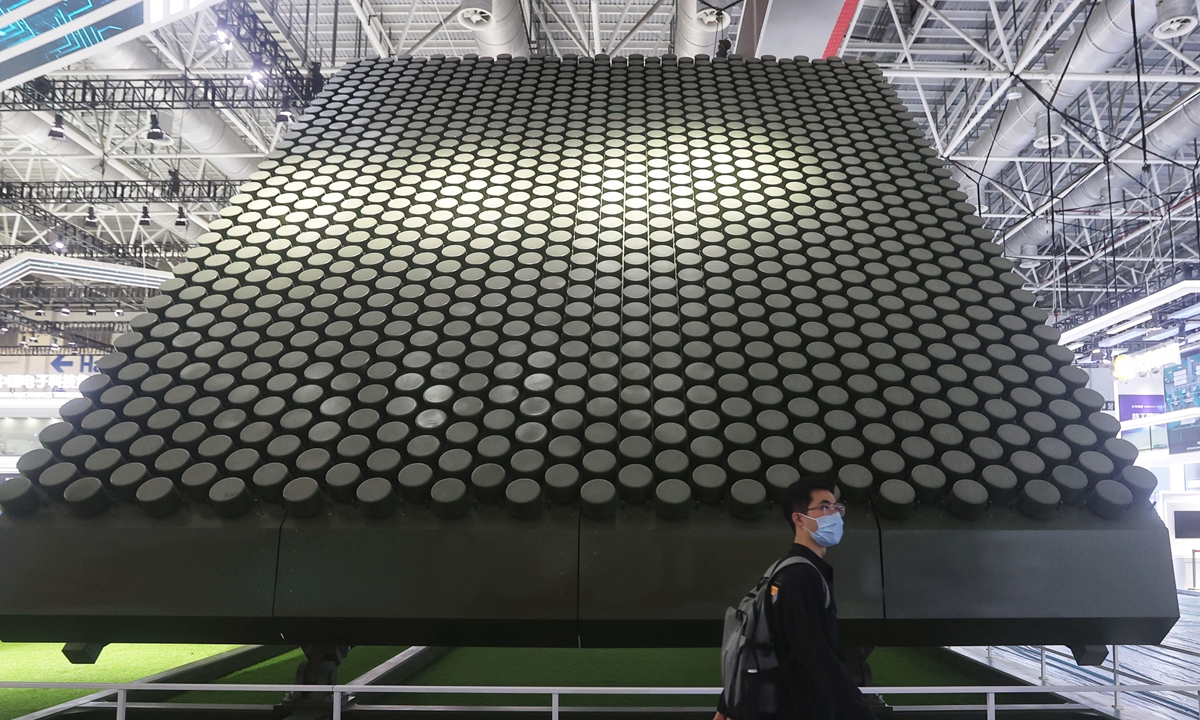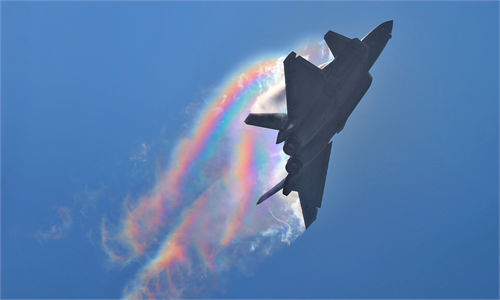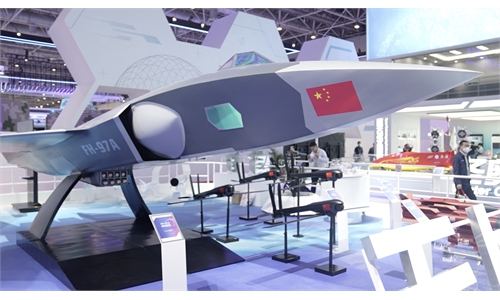
Photo: Cui Meng/GT
China's leading radar developer exhibited a giant space monitoring radar, which is believed to be the "most powerful radar," at this year's Airshow China. It's about 10 meters high, and it attracted wide attention not only from military enthusiasts but also from foreign visitors.
Standing out in the pavilion and recognizable for its huge and spectacular array of antennas, the SLC-18 space surveillance active phased array radar, developed by the No.14 Research Institute of CETC (China Electronics Technology Group Corp), was exhibited for the first time.
With the development of low-Earth orbit (LEO) satellite technology, satellites mainly used for information collection and battlefield reconnaissance have gradually become core equipment for modern, powerful countries to obtain remote information.
These satellites are usually characterized by strong capability, small size and flexible orbits, and they can realize intensive, 360-degree and all-factor reconnaissance of hot spots.
The Global Times learned from the No.14 Research Institute that the radar can search, track, calculate, catalog and forecast space targets such as LEO satellites, and obtain multi-target tracking and measurement data. It is mainly used for space target monitoring.
Sun Lei, deputy general manager of CETE Guorui Group, told the Global Times that in order to guard against the prying eyes of other countries' satellites, movements of sensitive equipment or deployments on the ground of many countries must often maneuver intentionally to avoid the transit time of satellites, or take countermeasures to interfere with satellite signals.
All of this is based on knowing when a satellite is in transit, but for most developing countries, it is difficult and expensive to develop the technology to monitor space targets. In the past, they bought in-orbit satellite data from developed countries, which is expensive and often outdated, making it difficult to obtain first-hand information, Sun said.
According to Sun, the SLC-18 radar, a P-band solid-state active phased array radar, is mainly used for space target monitoring. It can search for and capture LEO satellites and other space targets, and obtain multi-target tracking and measurement data.
In recent years, the US has promoted constellations of LEO reconnaissance satellites. They are no longer a few expensive satellites, but often consist of hundreds of small satellites. For example, the NDSA "Defense Space Architecture Layered Orbit Satellite Constellation" proposed by the Pentagon includes a large number of satellites running in different orbits. The US military plans to launch as many as 100 satellites in the next five years.
To cope with new challenges posed by constant launches of LEO satellites, the space monitoring system must have the ability to quickly monitor and identify objects, which brings new technical challenges.
"The SLC-18 radar can detect satellites from afar, and identify and catalog satellites to form a radar database, so as to guide other equipment to respond accordingly. It can also send satellite data to the command center to help make decisions," Sun told the Global Times.
The SLC-18 has wide-area detection capability, which can quickly capture a satellite's orbit and input the orbital data into the database. Through comparative analysis, it can quickly determine whether it is a new type of satellite and what its main use is, according to the orbit characteristics.
The radar has such outstanding advantages as all-weather, all-time, multi-target, large power and large search areas, which can detect LEO targets in a wide range of airspace and cover a large number of LEO satellite targets, he noted.
The Global Times learned from the institute that the SLC-18 radar can complete the all-round monitoring of satellite targets, and it has the ability to survey space targets. It also has a high measurement accuracy.
Based on the tracking information of the radar, a satellite overhead transit forecast can be provided through the orbit determination, and offer enough time for on-the-ground decision-making to take countermeasures.
Sun said that the radar is domestically made from manufacturing to chip technology and at the same time, it adopts the modular design, which means the radar can further improve its ability based on the need to increase the module, indicating that China's radar development has reached a new level.
"In the past, only a strong military power that had technical strength and economic and industrial foundations could conduct space target surveillance. For developing countries, it was difficult to have such capability.
"The SLC-18 radar uses relatively cost-effective ground-based space target surveillance, and it can serve countries along the Belt and Road Initiative, and provide situational awareness against LEO satellites," Sun said.





